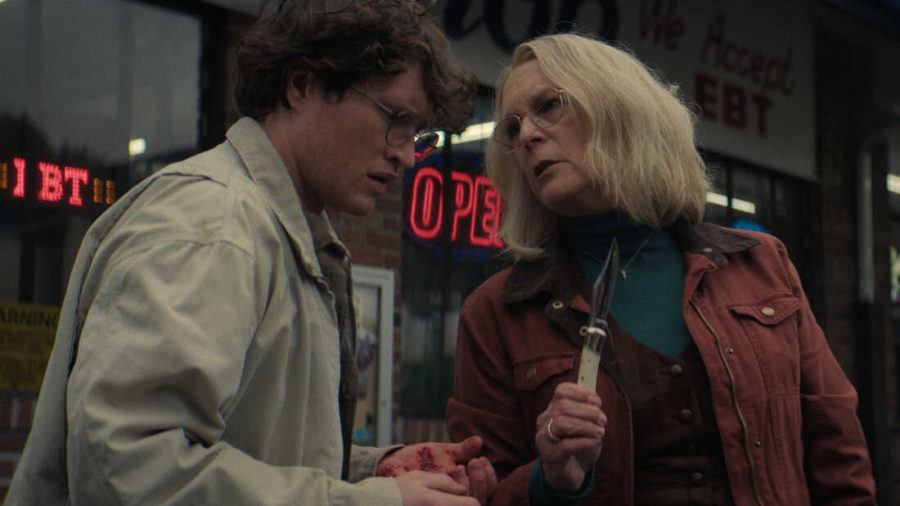‘Halloween Ends’ – Or does it?
Rohan Campbell and Jamie Lee Curtis star in Halloween Ends. Photo provided by Universal Pictures.
October 26, 2022
As the spooky season commences, horror fans have been taken aback by the assortment of new releases as horror movies begin to flood theaters once again.
Between the release of the first-rated horror movie “Barbarian,” Ti West’s new A24 franchise prequel “Pearl” and Olivia Wilde’s controversial “Don’t Worry Darling,” 2022 has proven to be a crazy year for horror.
The release of “Halloween Ends,” the 13th film in the epic horror franchise, is one slasher most fans are looking forward to seeing. Or were, anyway.
The “Halloween” series has remained one of the most iconic and long-lasting franchises in American horror. For over five decades, “Halloween” has helped define several themes and tropes that are now considered horror classics.
Some of these include the iconic mask used in “Friday the 13th” (1980), “The Purge” (2013) and “The Texas Chainsaw Massacre” (1974).
As a die-hard “Halloween” fan, I was curious to see how the directors planned to end the sequel. Throughout the franchise’s many different timelines and takes on Michael Myers, one question has always remained unsolved among viewers: is Michael Myers a supernatural force, an untouchable human being or something else?
The movie that should’ve taken the nostalgic approach took an entirely different route. “Halloween Ends” missed every mark of the saga in which it was created.
For 40 years, Michael Myers was in a maximum security prison. And throughout all that time, Laurie Strode lived the life of a paranoid survivalist. She never got over it. All she knew was fear and rage.
David Gordon Green started strong with “Halloween,” As the sequel began, Michael Myers remained at large after escaping prison. No one knew where he was. Everyone in Haddonfield was supposedly losing their minds out of fear.
Yet, in “Halloween Ends,” Laurie is now cheerful and carefree. Michael Myers is no longer the main villain, barely introduced until halfway through the movie. Michael is seen as weak, a predecessor to the new villain.
Why did Green base the movie’s focus on a new character instead of finishing Laurie and Michael’s story?
While I can appreciate the filmmakers for wanting to try a different approach with this final entry, “Halloween Ends” is barely a “Halloween” movie.
Instead of dedicating the film to the 40 years of strife between Michael and Laurie, it introduces a new antagonist, unnecessary romance and continuing comments on the effects of evil in Haddonfield.
Michael Myers, in his final form, was a stalker. It wasn’t his bloody knife or brutality that kindled fear. It was his hollowness. Filmmakers attempt to elevate Michael Myers beyond that soulless watcher, alluding to him as a physical manifestation of evil.
Unfortunately, no one can be certain if we’ll be seeing Michael again or if this was his last run.
One thing is certain, though – evil did die tonight, along with anything resembling a good story in Haddonfield.






























































































































































